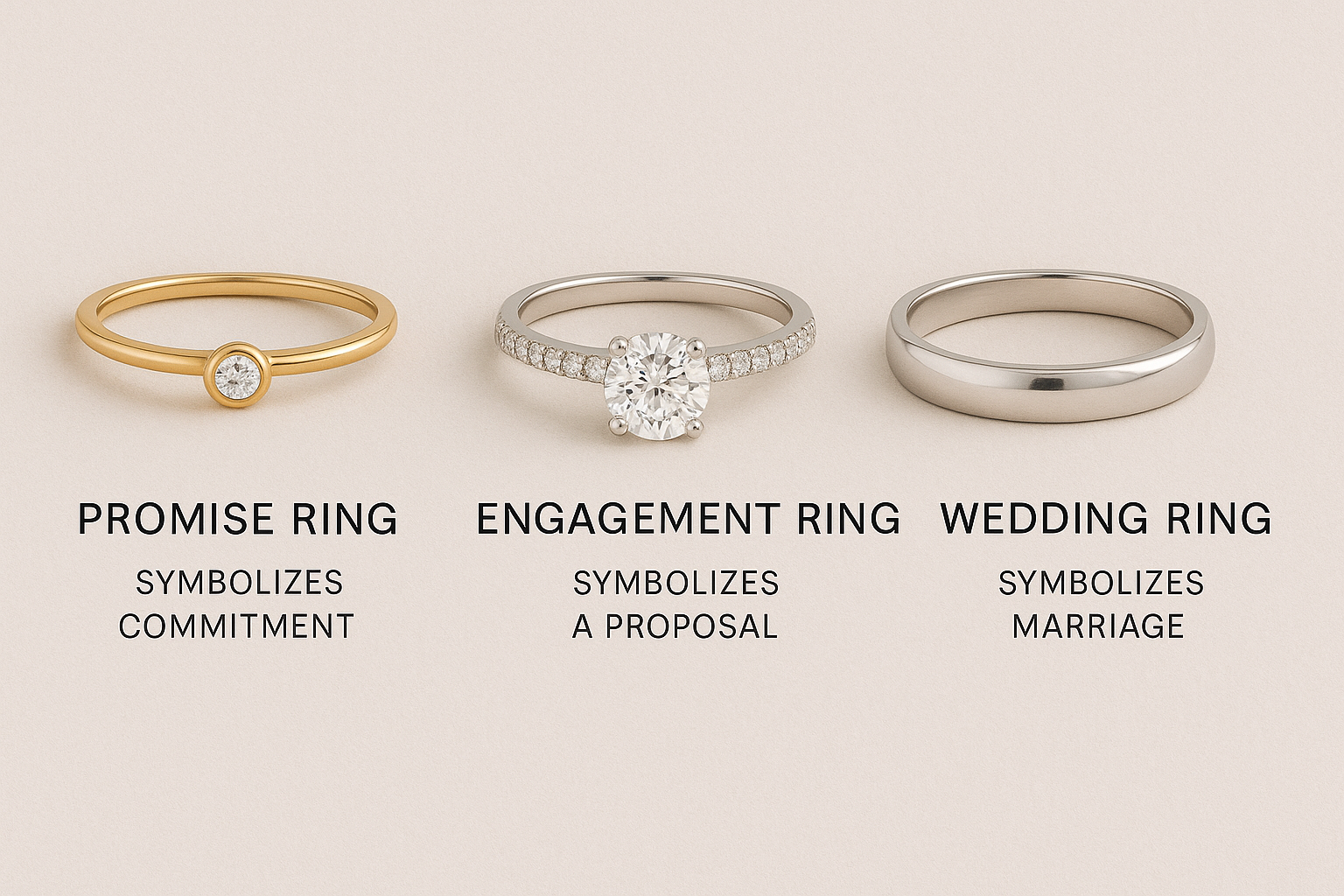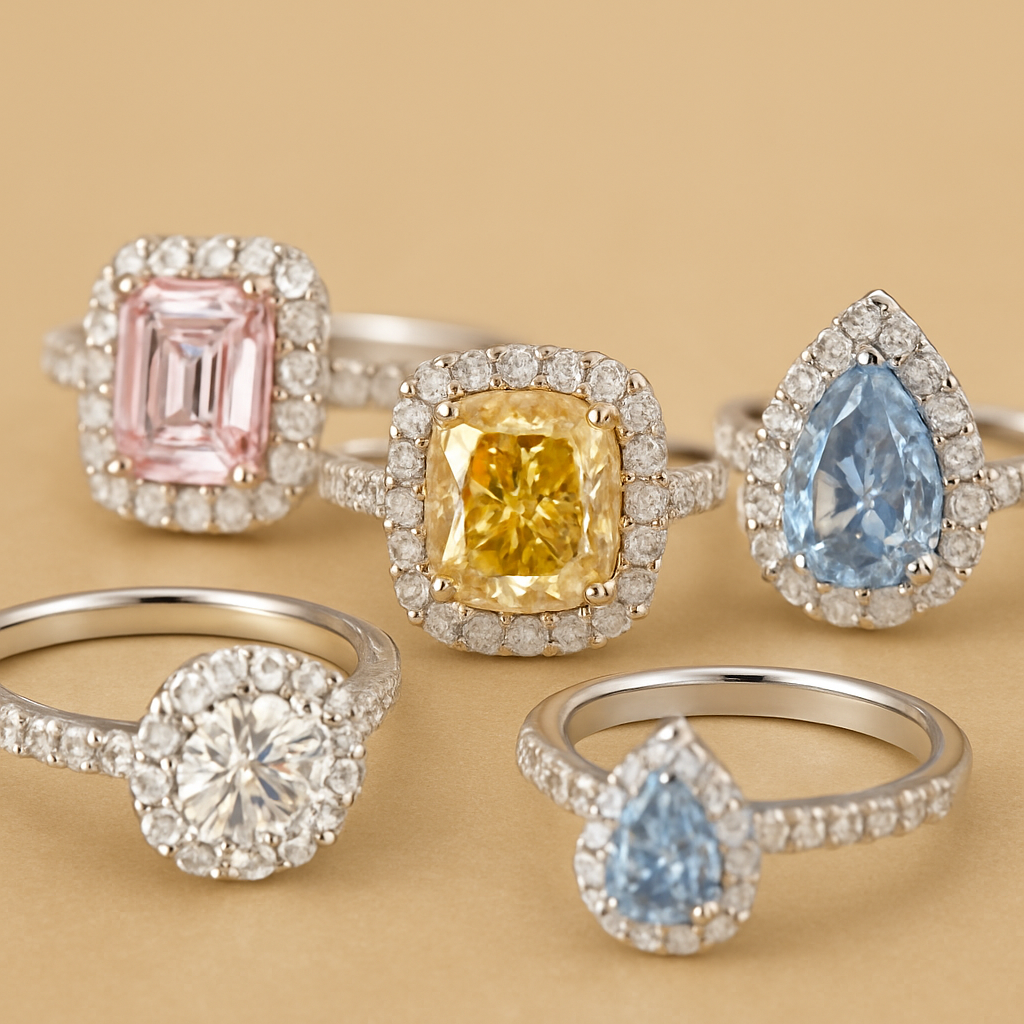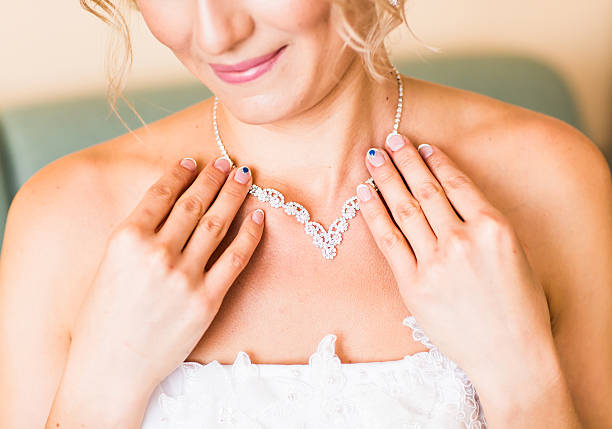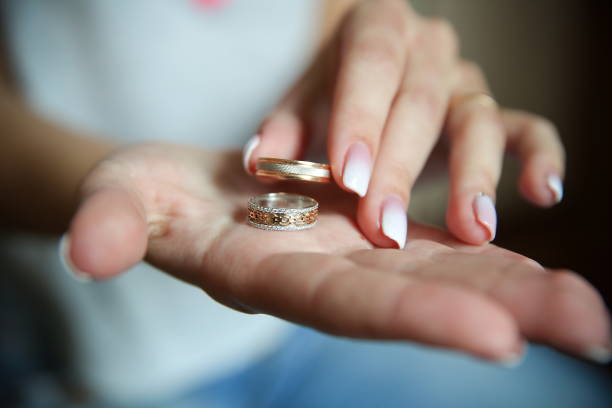For as long as anyone can remember, rings have been powerful symbols of love, commitment, and important milestones in life. Not every ring shares the same value or purpose, though. Understanding the differences between promise rings, engagement rings, and wedding rings will ensure you make informed choices that honor your unique journey, whether you're beginning in relationships or planning your big day.
1. What is a Promise Ring?
Meaning and Purpose

A promise ring, which is often exchanged early in a relationship, is a token of commitment and intention. It's an affectionate gesture that sends the message, "I am committed to us," without necessarily implying marriage immediately. Promise rings can also be a token of individual commitment, such as self-love, sobriety, or dedication to a cause.
History and Evolution
The history of promise rings, also known as "purity rings" or "pre-engagement rings," dates back hundreds of years. As a sign of love, "posy rings" were traded in the 16th century and engraved with romantic poetry.
These days, they're common among young couples, long-distance partners, and partners who wish to demonstrate their commitment before getting engaged.
Design and Style
Promise rings are usually less elaborate and more discreet compared to engagement rings. Popular styles are:
- Thin bands with tiny diamonds or gemstones
- Heart designs or infinity signs
- Customized engravings such as initials or brief messages
When to Give a Promise Ring
- Early stages of a committed relationship
- Before an official engagement
- As a meaningful gift between close friends or family members
Wearing a Promise Ring
Promise rings are typically worn on the middle finger or right hand. They are sometimes stacked with other rings, but they are typically worn alone to symbolize their unique meaning.
2. What is an Engagement Ring?
Meaning and Purpose

An engagement ring is the symbolic representation of the marriage proposal. It's the guarantee of things to come and the solid "yes" that precipitates wedding planning. The ring is intended to shine and be the centerpiece of a declaration of love and intention.
Historical Background
The practice of wearing engagement rings started in 1477, when Archduke Maximilian of Austria presented a diamond ring to Mary of Burgundy. The contemporary diamond engagement ring became popular during the 20th century with marketing strategies such as De Beers' "A Diamond is Forever."
Design Elements
Engagement rings typically have a dominant center stone, most often a diamond, supported by settings such as:
- Solitaire: A single central diamond, timeless and traditional
- Halo: A circle of smaller diamonds around the center stone to add brilliance
- Three-Stone: Representing past, present, and future love
- Pave: A band covered in small diamonds for added sparkle
Typical diamond cuts are round, princess, oval, cushion, pear, and emerald cuts.
Metals and Personalization
Platinum, white gold, yellow gold, and rose gold are popular metals. Most couples personalize their engagement rings with special designs, combination metals, or colored gemstones.
When to Present an Engagement Ring
- At a marriage proposal, typically as a surprise
- Occasionally selected together when planning
Wearing an Engagement Ring
Traditionally on the left ring finger, engagement rings are commonly paired afterwards with a wedding ring, frequently stacked for a layered design.
3. What is a Wedding Ring?

Meaning and Purpose
Wedding bands (or rings) are exchanged at the time of the wedding as a reflection of everlasting love and marriage commitment. Wedding rings, unlike engagement rings, symbolize the legal union and are generally worn every day as an indicator of being married.
Historical Significance
Wedding rings trace their roots back to ancient Egypt, where the circle represented eternity and boundless love. The tradition was adopted by Roman weddings, and wedding bands are still today a global symbol of matrimony.
Styles and Traditions
Wedding rings are generally:
- Plain metal rings in gold, platinum, or white gold
- Sometimes set with pavé diamonds or engraved motifs
- Made for comfort and durability to wear daily
Couples prefer matching bands or complementary styles that stack nicely with engagement rings.
When to Swap Wedding Rings
- During the wedding ceremony
- Sometimes followed by reception or private moment
Wearing Wedding Rings
Typically worn on the left ring finger, wedding rings usually sit nearest the heart, with the engagement ring stacked on top.
4. Key Differences At a Glance
|
5. How to Choose the Right Ring

Selecting the ideal ring is an individual experience that mirrors your relationship's tempo, personality, and priorities. Following are some precise tips for the right ring at the right time:
- A promise ring is ideal if you want to show your commitment but aren't ready to get engaged.
- An engagement ring with a significant stone is the traditional option when you're ready to pop the question.
- Choose wedding bands for the wedding day that go well with your engagement ring or express your personal style.
6. Cultural Variations & Modern Trends
Rings hold significant cultural meaning and have great variety in style, tradition, and symbolism worldwide. Having knowledge about these differences will enrich your own appreciation and guide you to decide what seems right for you.
Cultural Differences:
- Western Culture: Wedding bands are typically diamond solitaires and are worn on the left hand, and are exchanged at the time of the ceremony.
- Eastern Europe and Latin America: Wedding and engagement rings can be worn on the right hand, reflecting various cultural attitudes toward luck and protection.
- India: Married women wear toe rings (bichiyas), and engagement rings are becoming more popular, a reflection of westernization.
- Middle East: Gold bands are commonly used for their auspiciousness and attractiveness, with intricate designs representing wealth and status.
Modern Trends:
- Gender-Neutral Rings: Couples are choosing rings that break free from conventional gender expectations, instead opting for clean and minimalist designs.
- Lab-Grown Diamonds: Environmentally friendly and budget-friendly substitutes for mined diamonds are quickly gaining popularity without compromising on brilliance.
- Mixed Metals: Mixing rose gold with white or yellow gold provides a distinctive, bespoke look.
- Stacked Rings: Brides tend to stack several thin bands for a personalized, fashion-forward appearance.
- Personalized Engraving: For personal promises, unique dates or even the patterns of your fingerprints, personalized engravings bring about personal meaning.
7. Caring for Your Rings: Tips for Longevity and Sparkle
Your rings are a constant reminder of your love and are worthy of gentle care so that they look stunning for life.
- Clean your rings at home with warm water, mild dish soap, and a soft-bristled toothbrush regularly.
- Don't use strong chemicals or harsh materials to scratch metals or damage stones.
- Every 6–12 months professional cleaning and checking ensures brilliance is maintained and settings stay in place.
- Take off your rings when engaging in physical activities, heavy lifting, or gardening to prevent chipping or loss.
- Keep away from lotions, perfumes, and household cleaners that can dull metal and stones.
- Keep rings apart in soft pouches or lined jewelry cases to avoid scratching.
- Have your rings insured against theft, loss, or damage — particularly valuable items.
- Keep receipts and appraisal certificates in safe storage.
- Certain jewelers provide warranties or maintenance plans — make use of these services.
8. Final Thoughts: Your Ring is a Reflection of Your Unique Story
The path from promise to engagement to marriage is one of rings that say a lot about your commitment, style, and history together. Whether you opt for a minimalist promise ring, a sparkling engagement ring, or an enduring wedding band, each is a page in your love story.
Don't forget, the real worth of a ring isn't its cost or size but the significance it carries and the memories it bears. Select a ring that speaks to your heart, your beliefs, and your future together.
At San Liora, we believe that each love story is special. That's why our line of lab-grown diamond promise rings, engagement rings, and wedding bands is carefully designed to commemorate your own unique journey. Sustainably crafted, ethically sourced, and beautifully designed, our rings bring brilliance with intention—so your ring can sparkle as brightly as your love.







